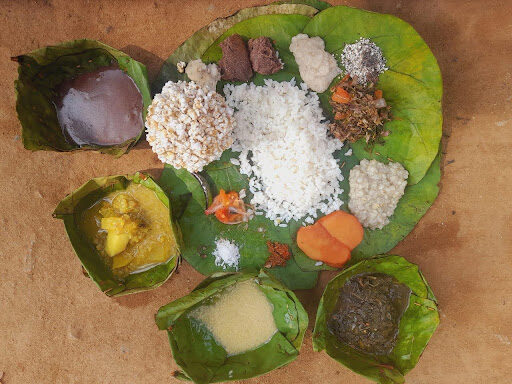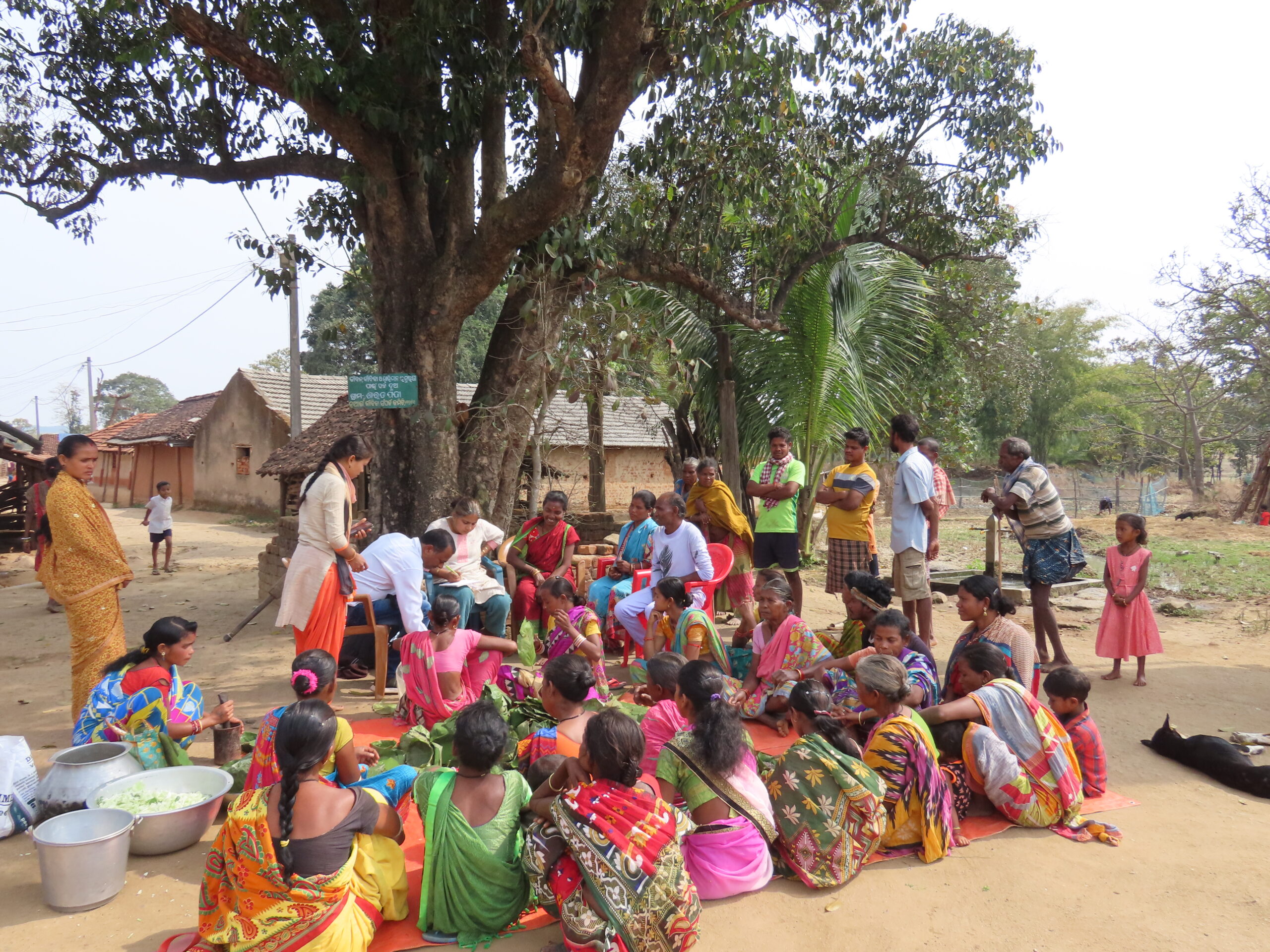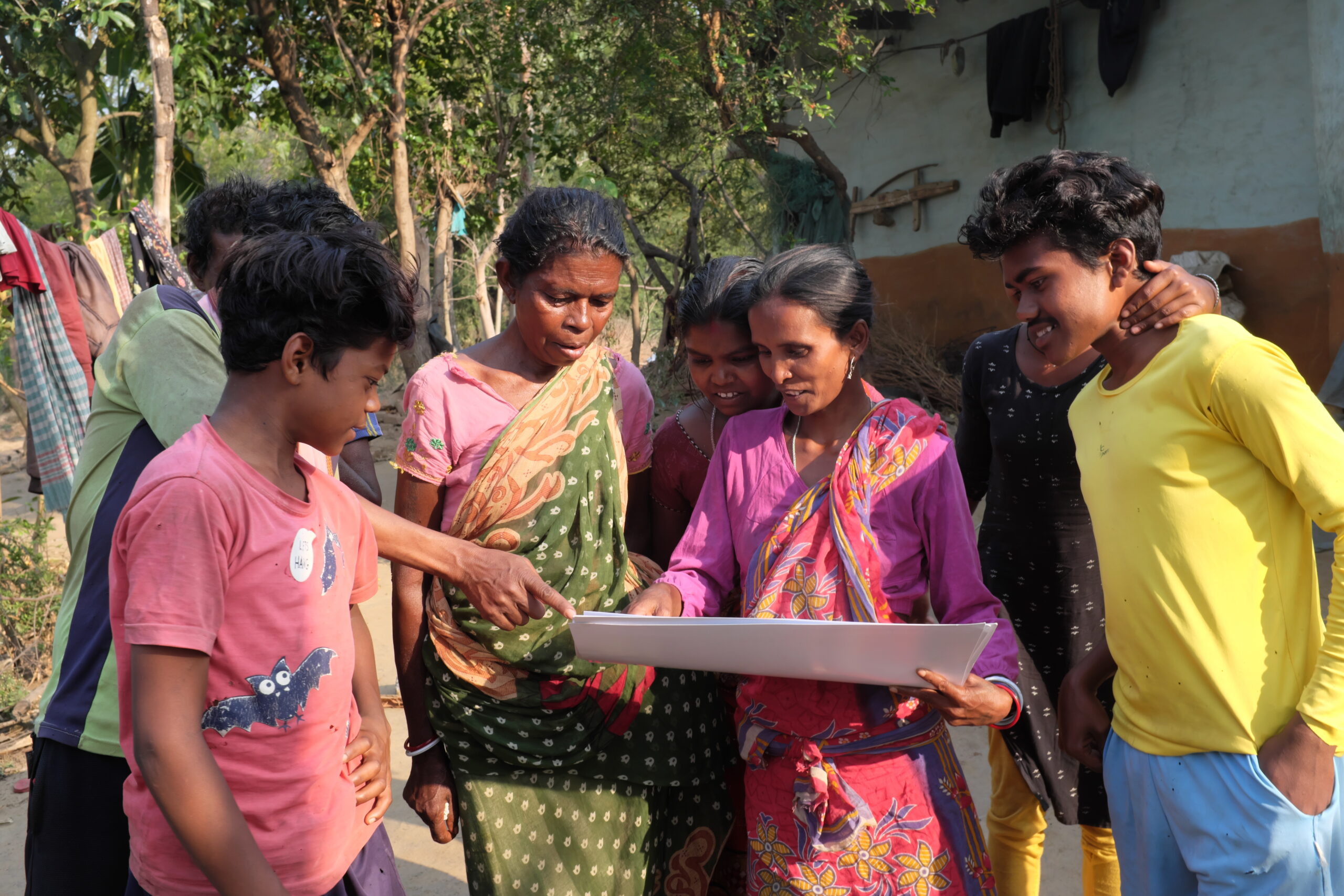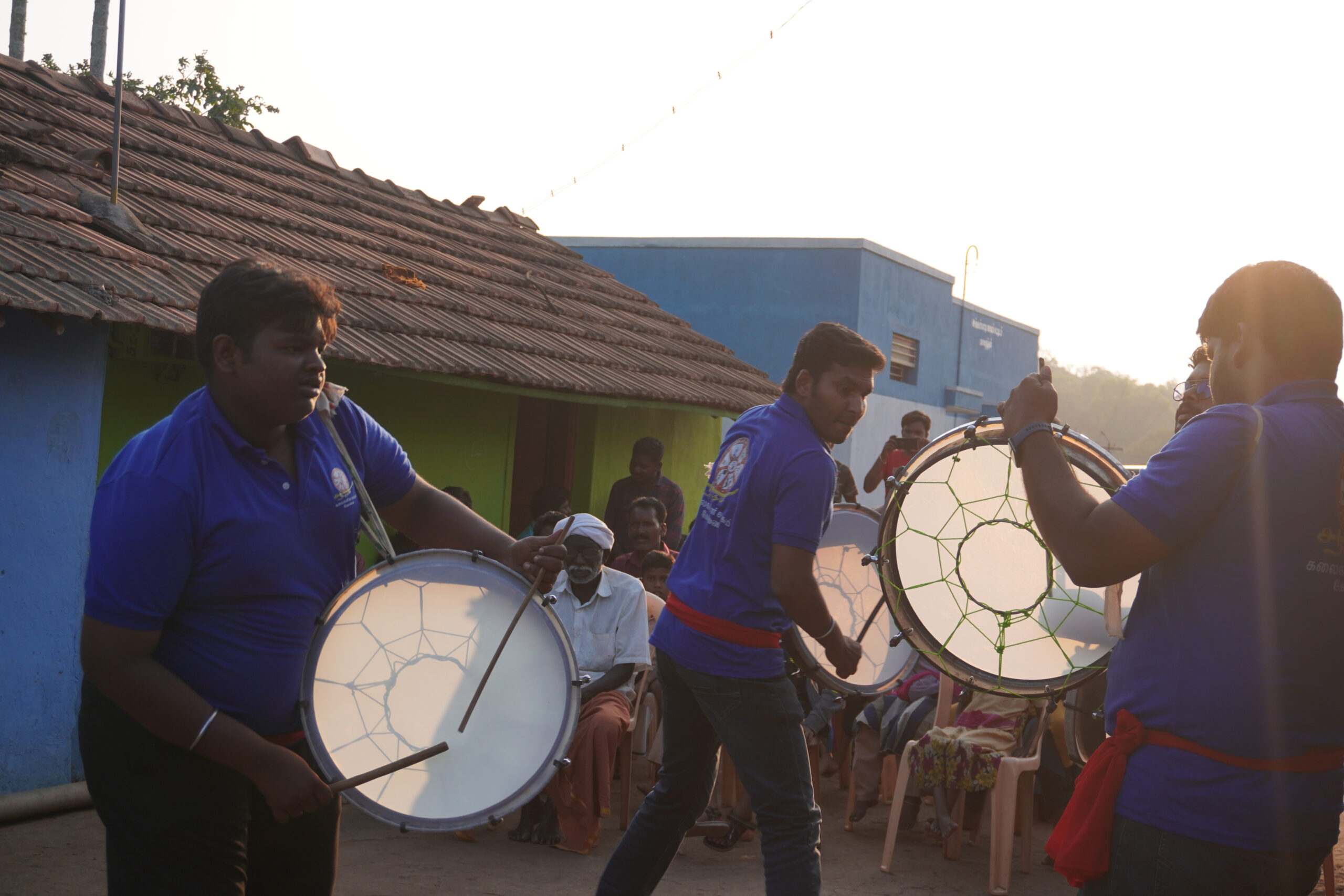March 6th, 2024
By Jyoti Patale
On February 12th, the Paudi Bhuyan community, located in the Mundatopa village of Banspal block, Keonjhar district, Odisha, came together to prepare traditional millet recipes throughout the day. Millets like foxtail, Sorghum, Gundali (little millet), and finger millet were used to make tasty dishes.
The journey from grain to plate is one of hard work. The first step in preparing millet dishes involves dehulling the grains, in which the outer husk or covering from the millet grains are removed. Women in the community used traditional wooden grinders called Dheki for this task. They carefully grinded the millet grains to separate the husk from the edible part. Once the millets are dehulled, they are processed further depending on the dish being prepared. It’s hard work, but they did it with skill and patience. Once the millets were ready, they made different dishes. Using these millets, they cooked sorghum rice, finger millet bread, peetha and little millet halwa and rice. Alongside these main dishes, chutneys made from Niger and dal complemented the meals.
Overall, the preparation of traditional millet dishes involves a combination of manual labor, traditional techniques, and culinary expertise, resulting in delicious and nutritious meals that reflect their rich cultural heritage.
Through the labor-intensive process of dehulling and cooking millets, the Paudi Bhuyan community preserves age-old traditions and passes down valuable culinary skills from one generation to the next.
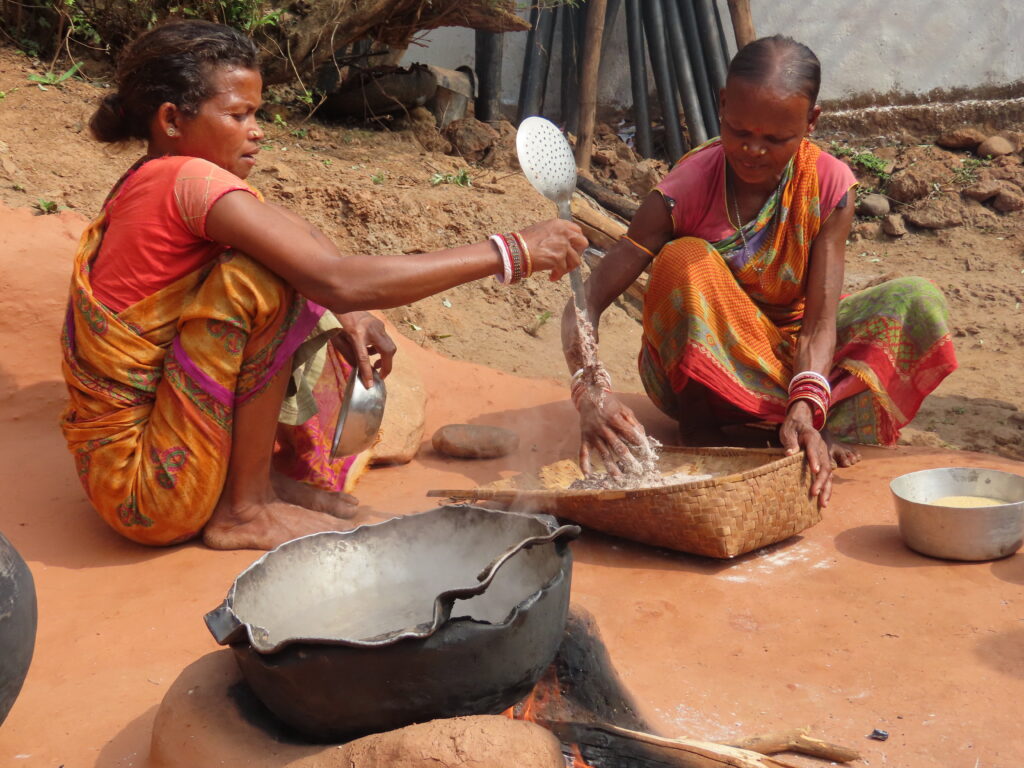
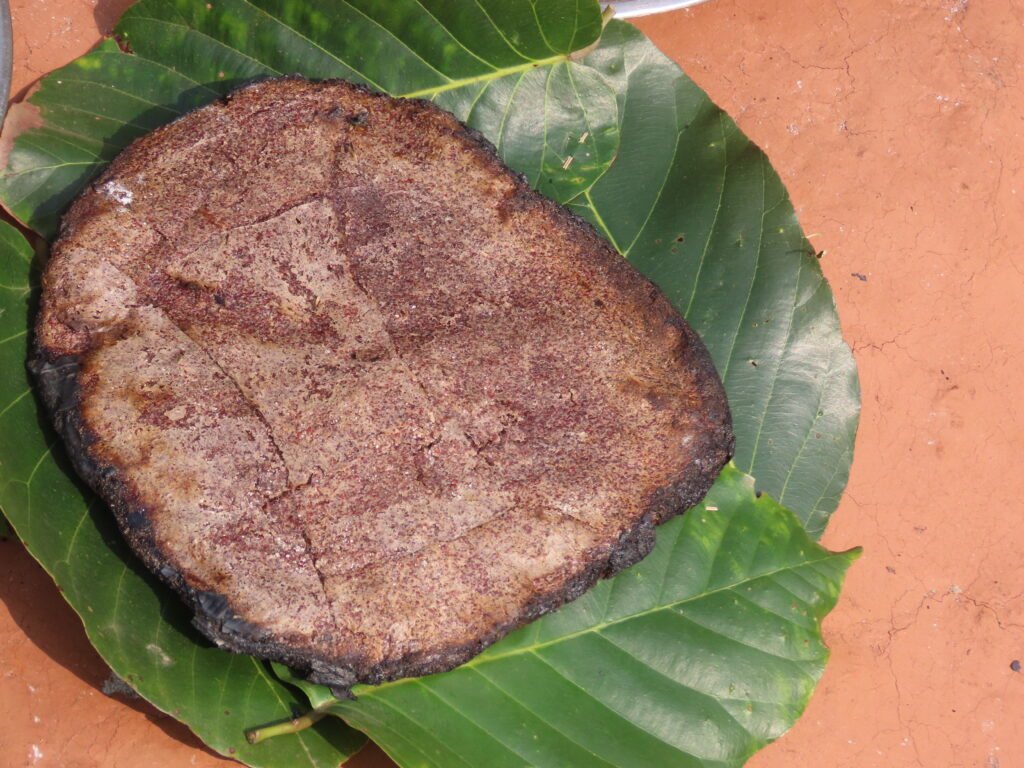
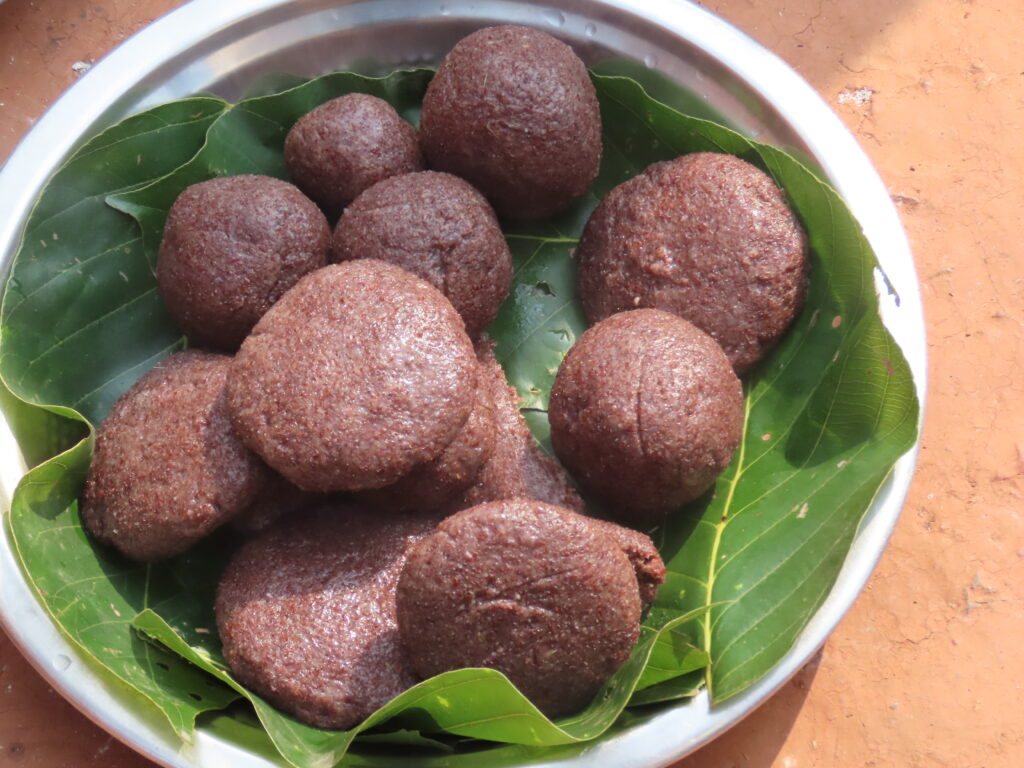
Gundali (Little millet) bread
To make little millet bread, the women of the Paudi Bhuyan community follow a simple yet meticulous process. First, they soak the little millet grains in water for an hour to soften them. Then, they grind the soaked millet using a wooden grinder. After grinding, they sieve the flour to remove any large particles. Next, they grind the flour again to ensure a smooth texture. With the finely ground little millet flour, they mix water and salt to form a dough. This dough is shaped into flatbreads on Sal leaf and cooked on a chulha (traditional clay stove) until golden brown and cooked through. This traditional method results in wholesome and nutritious little millet bread.
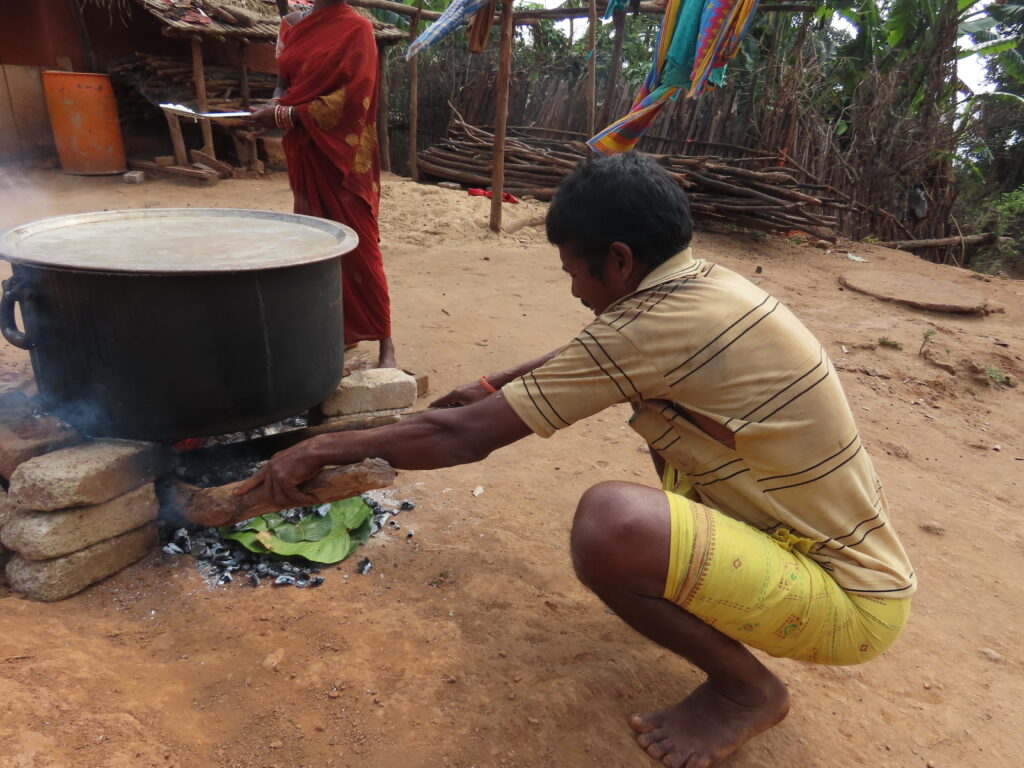
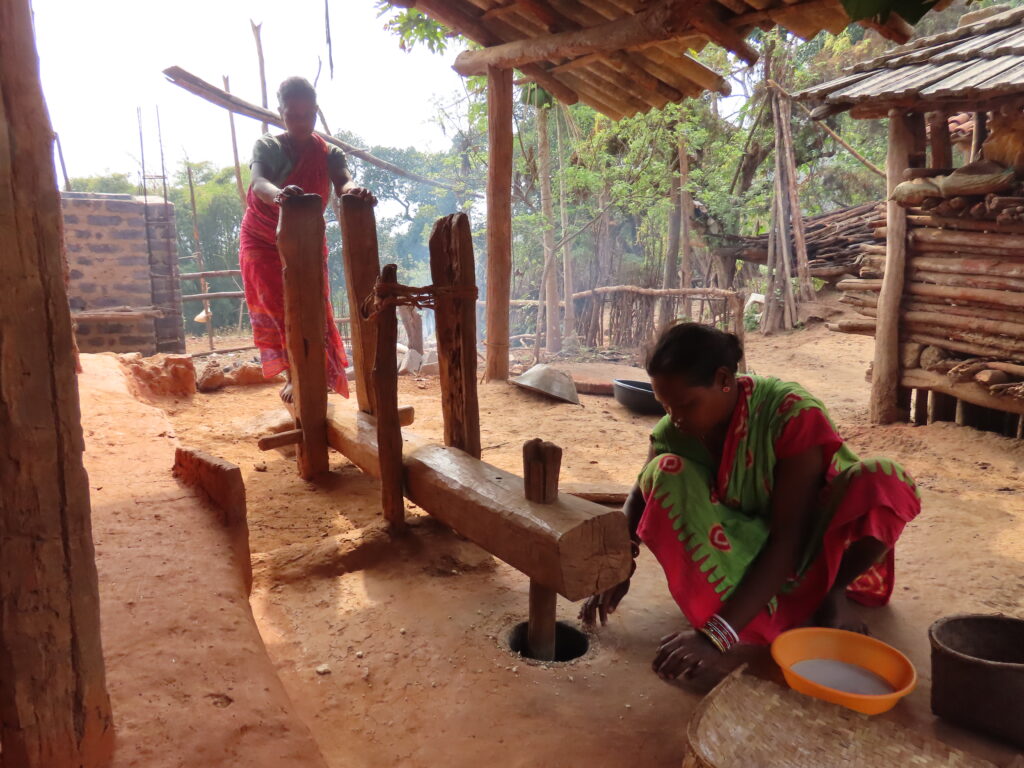
Traditional Millet Food Recipe Preparation by Juang community
The next day, on February 13th, the Juang community of Saratpada in Harichandanpur block, Keonjhar district, Odisha, also came together for a day of traditional millet recipe preparation. The women of the village gathered enthusiastically under the sprawling peepal tree, a common meeting place for sharing knowledge and skills passed down through generations. Amidst this natural setting, an elderly woman took the lead, sharing stories of the community’s hard work and healthy food habits.

The gathering was not just about cooking; it was a celebration of their rich cultural heritage. The women discussed and showcased their expertise in using wild foods, which they had collected from the surrounding forests. With this sharing, the women prepared a variety of millet-based dishes.The aroma of freshly popped popcorn made from sorghum filled the air, as popcorn laddus mixed with jaggery were created. Also, with Mahua and Niger powder, tasty chatani made from popcorn. The women expertly made little millet bread, forming the dough with water and salt before cooking on the chulha. Little millet rice and foxtail millet sweet dish also prepared by the women.
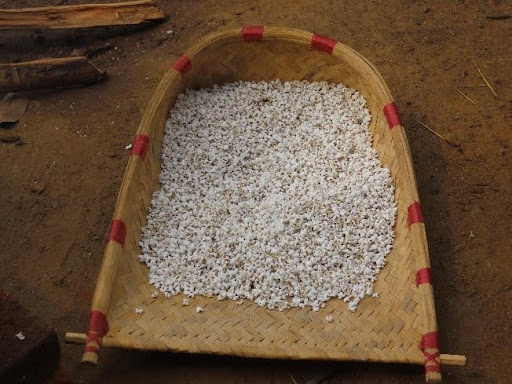
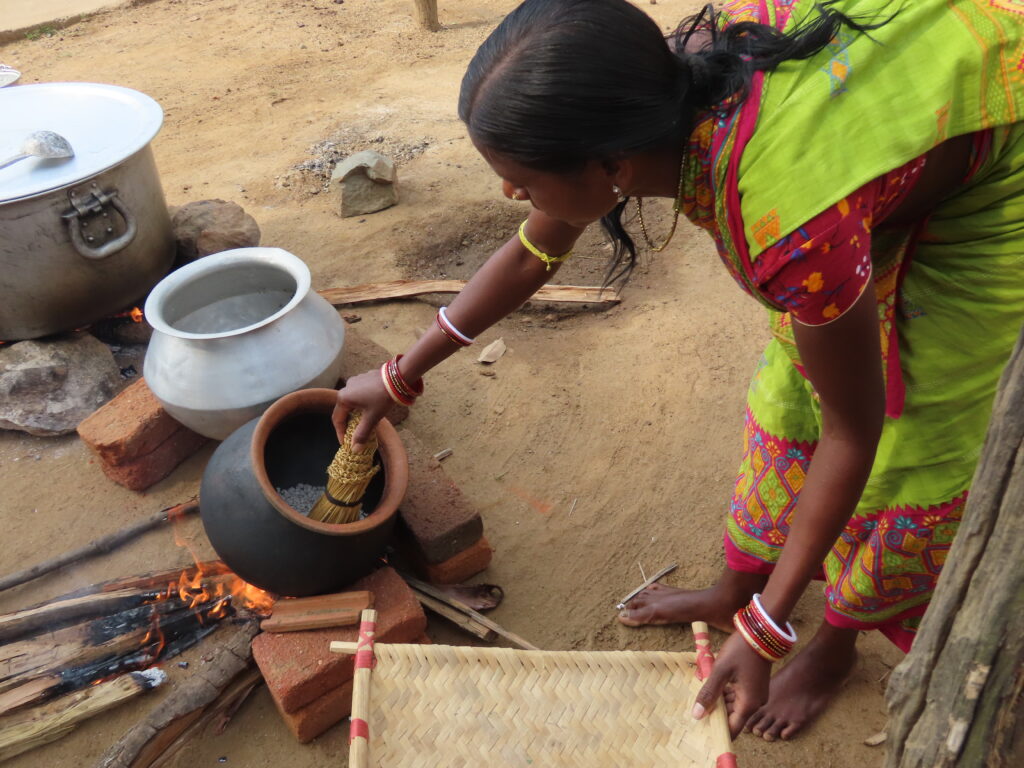
Delicacies like finger millet kheer and sorghum rice were also on the menu, showcasing the versatility of millets in traditional recipes. To complement these dishes, they prepared unique accompaniments such as red ant chutney and various vegetable dishes.


Each step of the process was a labour of love, as they ground the millets manually using traditional methods. The women shared stories, songs, and laughter as they cooked, turning the simple act of food preparation into a joyful and communal event.
As the day progressed, plates were filled with an array of colourful and nutritious dishes, each representing a piece of their heritage. This gathering not only celebrated their culinary traditions but also served as a reminder of the importance of preserving their cultural identity through food.

